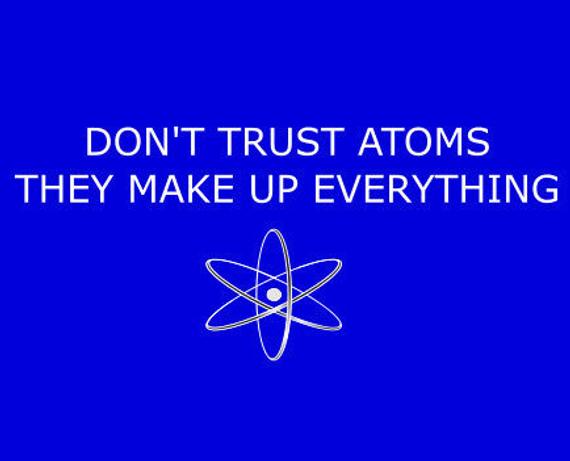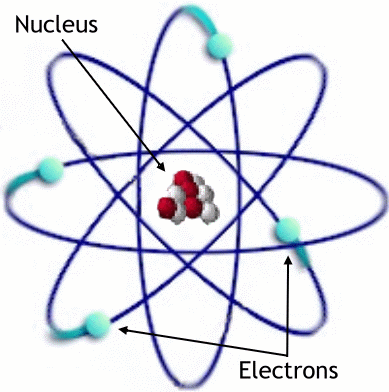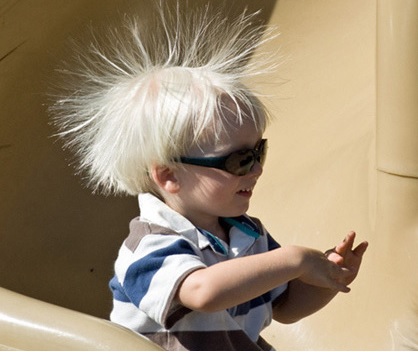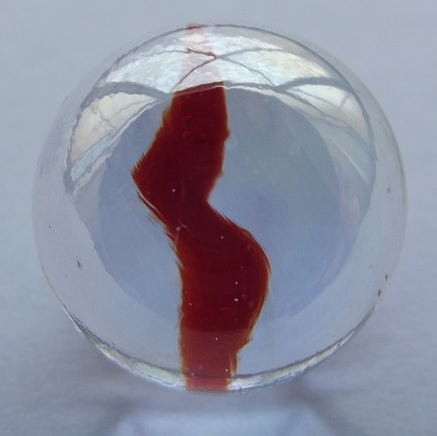
All About Atoms

OK, geeky humor aside, atoms are the building blocks of the world around us. As such, it is important to get a basic idea of what they are and how the different parts work together.
So, let's learn about them.
A quick history
In 400 B.C., a Greek philosopher named Democritus reasoned that matter must be made of some basic blocks. He reasoned that you could cut something in two halves, then turn around and cut these halves into two (anyone who has chopped fruit or vegetables understands). But keep this up, chopping into ever smaller pieces and Democritus reasoned that one can only keep this up for so long before you get pieces you just can't cut. We call these pieces atoms from the Greek meaning 'not cuttable.'
In the middle ages the idea of basic elements persisted, but was viewed as being of earth, air, fire and water. The whole objective of the medieval alchemist – from which we get the word chemist – was to find a way to rearrange these elements so that lead can be converted to gold.
In the 1800's the idea of atoms regained some ground by chemists to explain what reactions produced even proportions of some reactions – reaction X makes 2 parts of this to 3 parts of that. However, it wasn't until the first quarter of the 20th century before the atom could be understood.
The parts
The parts are well understood.

Let's break them down.
The Nucleus
The nucleus is the core of the atom as well as its anchor. It is home to the protons and neutrons. And for those familiar with biology, the term nucleus was borrowed from biology for the center of a cell – literally meaning the center of a cell.

Electrons
The electrons whirl about the atom like planets about the Sun. They have an electric charge that pushes them away from each other like a bad hair day.

And they do, they spread way out! How way out? Suppose one were to make a scale model of an aluminum atom with the nucleus the size of a marble.

The 13 electrons for this atom would be spread out to the width of a football field!

So the electrons spread out and hog all the space.
Poor little nucleus? Not quite. For as the electrons hog up all the space, the nucleus hogs the weight. For example, suppose one were to take out all the electrons in the entire Eiffel tower.

All the electrons would weight about 27 tons – compare that with the 10,000 tons remaining! In fact, it is for this very reason that the nucleus can be an anchor to the atom.
It is the electrons that are the chief players when atoms interact with each other. In Chemistry, they are the stars.
Protons
Protons live in the nucleus and play an important role. Protons also have a charge like electrons, but their charge attracts the electrons like turbo static cling. In this way, they hold the electrons in the atom and so hold the whole atom together.
Neutrons
Neutrons are to protons what protons are to electrons. Like electrons, protons want to be pushed far away from each other. This is when Neutrons come to the rescue! Neutrons and protons cling together strong enough to hold the nucleus together. This strong force is called, no surprise, the “strong force.”

In atoms, every part has its role in the atom as well as our own lives.
So, let us give thanks for atoms.
Great Books
Mr Tompkins Explores the Atom
Part of the Mr. Tompkins series written by the physicist George Gamov. The series is a fun way to explore topics in physics though the imagination of a mild-mannered bank clerk named Mr. Tompkins.
In most cases the story follows a similar pattern. He listens to series of physics lectures – the lectures being to dry for him and he falls asleep. While asleep, he has dreams that puts him into the topic at the moment. In this way, the content can be more easily visualized and understood.
I read this book to my kids and they enjoyed the dream part and it did help them understand the atom. In this book the chapters that I think are best are as follows:
The Gay Tribe of Electrons – Mr. Tompkins falls asleep during a leture on atoms and dreams he is an electron amongst a happy community of other electrons.
The Woodcarver – While visiting the professors laboratory, Mr. Tompkins receives a large electric shock. While unconscious, he dreams that he is visiting a woodcarver who makes atoms by combining electrons, protons and neutrons.
Don't miss out on future posts! Sign up for our email list and like us on Facebook!